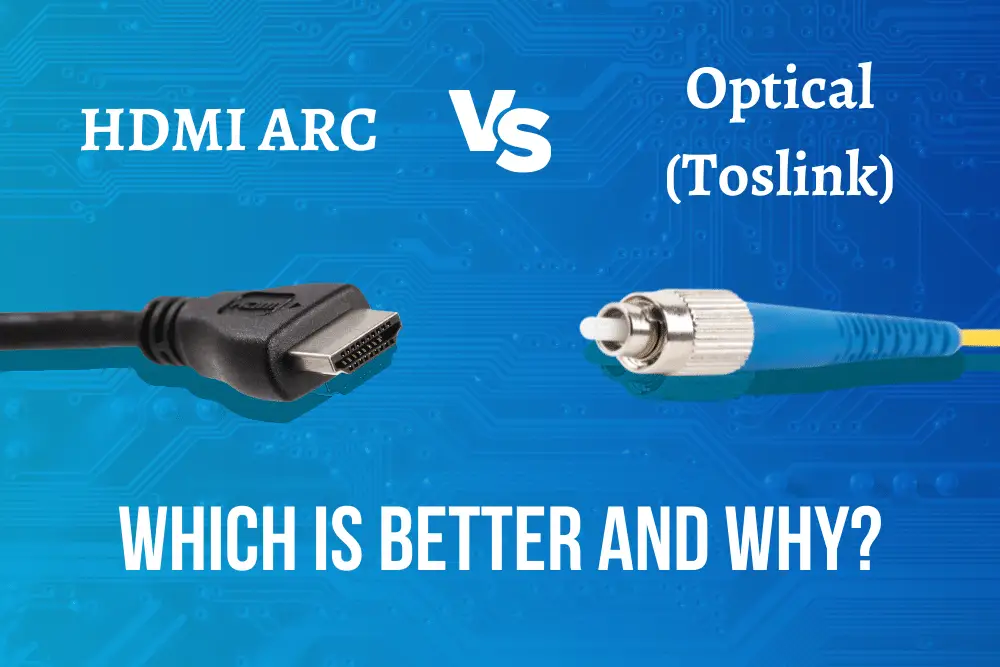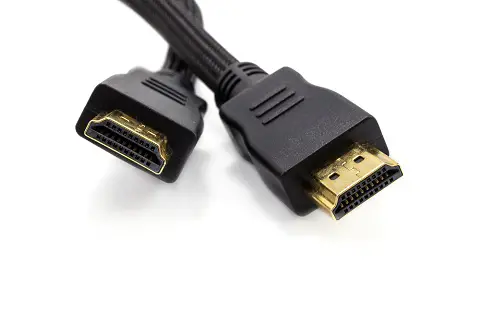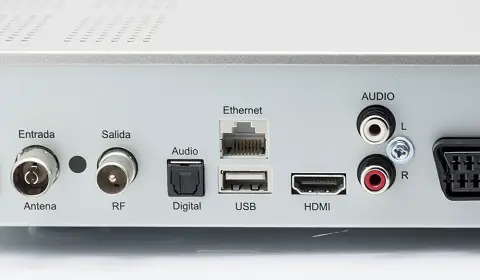
*As an Amazon Associate we may earn from qualifying purchases when you buy through links on our site.
HDMI and optical are among the most practical ways available to establish a functional audio/video connection between devices. Most people find themselves stuck when deciding between these two technologies for their domestic or commercial uses.
Your decision boils down to which devices you’ll connect to, the connection possibilities of the devices, and the video and audio quality you’d like to achieve.
The main difference between HDMI ARC and optical is the audio resolution supported. HDMI supports higher-resolution audio formats, including Dolby TrueHD and DTS HD audio found on Blu-ray.
Optical is audio only and doesn’t support the latest audio formats, so may limit your overall experience. This article expands on the differences between HDMI ARC and optical and the best applications for each.
What is HDMI ARC?
HDMI stands for high-definition multimedia interface. It’s a popular technology favored by consumers who enjoy HD signal transmission, which guarantees high-definition audio and video from your devices to the screen. HDMI cables are affordable, easy to obtain and come in different lengths to support various applications.

ARC, or audio return channel, helps connect your TV and sound system through a high-speed HDMI cable. This configuration eliminates the need to use additional cables to support audio or visual transmission.
The HDMI ARC system proved effective in improving convenience and quality consistent in transmitting signals in your home.
What is Optical?
Optical is an alternative to HDMI cables. Otherwise known as Toslink, this allows users to transfer audio from a device to a soundbar or AV receiver through a standardized optical fiber connector system. The configuration is most common in old consumer audio equipment like DVD players, DAT recorders, and numerous game consoles.

Some devices don’t have HDMI ports for audio-visual connectivity. Optical audio can assure good signal quality across all your connected devices. Toshiba was the first to introduce these cables in the 80s, and they became the easiest way to transmit DTS and Dolby Digital to your AV receiver.
What Are The Basics of HDMI ARC and Optical?
HDMI ARC and optical audio both serve a common purpose: to facilitate the high-speed transfer of audio signals between devices. Both configurations allow you to transfer multi-channel audio to either an AV receiver or a sound system.
Although optical cables don’t support the transfer of video signals, it doesn’t account for that much difference considering HDMI’s characteristics. While HDMI cables are made of copper, optical cables use fiber optic strands. Copper is standard when manufacturing electronic wires.
Copper is an industrial metal so it’s prevalent in electrical products. Although it’s affordable, it compromises the quality delivered because of its susceptibility to electromagnetic interference (when not insulated or shielded). Optical cables are more expensive to manufacture but are immune to electromagnetic interference.
Below is a video that explains major differences between HDMI ARC and digital optical.
Comparing the Specifications of HDMI ARC and Optical
Below is a detailed comparison of the two technologies according to important criteria.
Audio Quality
HDMI and optical audio present differences in audio quality. Modern HDMI cables support more audio formats, guarantee a better sound quality, and are the best option for anyone with a powerful sound system. The audio quality delivered by an HDMI audio connection with home theater systems is outstanding.
Optical cables, on the other hand, are rather limited in the variety of audio formats they can support. They can’t support Dolby Digital Plus, DTS HD, or True HD because of bandwidth restrictions. This limits their capacity, making it unwise to use digital optical for advanced stereo systems.
Of all these, HDMI ARC is the best technology for those with powerful and advanced sound systems. This connection supports all audio formats, guaranteeing you high-quality images and sound. You’ll need to upgrade your HDMI (via firmware) to an eARC setup to allow it to support more devices and access additional features when using a 7.1 surround sound system.
Video Quality
Generally, HDMI offers better video quality and is less expensive than optical. For the latter, you’ll need additional cables to support video signal transmission in your setup.
HDMI cables guarantee high-definition video signals in your configuration. However, it’s crucial to understand the different HDMI cable variants and the output quality offered by each.
HDMI 2.0 is perfect for 4K video output, although your frame rate will be limited to 60 fps (frames per second).
HDMI 2.1 cables offer 120 fps for your 4K video output. It also supports virtual reality systems.
Input Options
The input options on your device also dictate how compatible each cable type is with your situation. It’s vital to check all the ports and inputs in your devices before settling on a connectivity approach.

Some devices don’t feature HDMI ports, while others do. You’ll be limited to optical cables for audio and video signal transfer in your setup if the device doesn’t support HDMI.
Cable Length
Optical is more effective for longer connections than HDMI. You must understand the basics of audio and video transmission regarding the length of your connecting cables. Specialists recommend using the shortest possible link for your audio system to prevent signal loss on extended connections.
Since video signals use more bandwidth, they’re generally more susceptible to signal degradation. On the other hand, optical cables have greater tolerance for electromagnetic interference. Most HDMI cables don’t exceed 15 meters (about 50 feet).
One reason for this is their low voltage, which makes them lose more signals on longer connections, causing quality degradation. Another is the fact their core is made of copper, which as mentioned above is susceptible to interference.
Optical cables can extend up to 30 meters (about a hundred feet) without losing signal quality.
When is Optical a Better Option than HDMI ARC?
In some scenarios, you’ll benefit more by considering an optical cable configuration over HDMI. One common scenario is when your devices don’t support HDMI connectivity. It could be that your device only works with an optical audio setup, making its alternative an incompatible option.
Optical connections are also reliable since they’ve been around for longer, since 1983. They’re also affordable, widely available, and deliver quality audio.
The audio delay experienced in optical setups is not like HDMI ARC. HDMI can cause audio lags on specific devices because it’s not always in sync with the video output.
You should also probably consider optical cables if the cable must be run a long distance. It could be that your receiver and devices are far apart, or you want to connect devices in different rooms.
Optical cables can support a connection extending to 30 meters, while HDMI only supports half of this distance.
When is HDMI ARC a Better Option than Digital Optical?
HDMI ARC is superior to optical audio in most scenarios. It provides high-quality quality audio and video and has consumer electronics control, or CEC, which allows users to control the power and volume of their devices from one remote control.
One possible scenario where HDMI ARC is ideal is when you plan to use multiple devices as your audio signal source. For example, you have a Playstation 5, Apple TV box, and soundbar connected to your TV with HDMI cables.
You don’t have to connect all these devices to your soundbar to transmit audio signals from either source. The TV-soundbar HDMI connection is enough to establish a functioning audio link to the soundbar.
You’ll also benefit more from HDMI ARC if you have an advanced audio system. The only downside to HDMI ARC connectivity is the number of HDMI ports available. Most units don’t have more than three ports, which is insufficient for those with many devices to connect.
Conclusion
HDMI ARC has proven to be the best audio-video connectivity approach, compared with optical. However, in some situations you may want to nonetheless choose an optical cable over HDMI ARC. Your choice of technology depends on the existing connectivity options of your devices and what you want to achieve.
